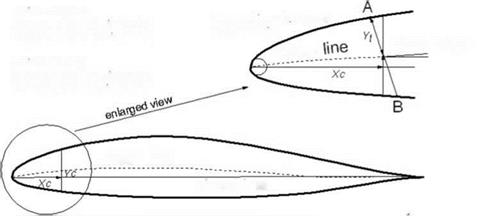Forces
In a steady-state level flight, an aircraft is in equilibrium under the applied forces (i. e., lift, weight, thrust, and drag) as shown in Figure 3.9. Lift is measured perpendicular to aircraft velocity (i. e., free streamflow) and drag is opposite to the direction of aircraft velocity (naturally, the wind axes, FW, are suited to analyze these parameters). In a steady level flight, lift and weight are opposite one another; opposite forces may not be collinear. In steady level flight (equilibrium),
Force = 0;
|
X lower = Xc * Yt sin (theta) |
 chord line
chord line
Figure 3.10. Aerofoil section and definitions – NACA family that is, in the vertical direction, lift = weight, and in the horizontal direction, thrust = drag.
The aircraft weight is exactly balanced by the lift produced by the wing (the fuselage and other bodies could share a part of the lift – discussed later). Thrust provided by the engine is required to overcome drag.
Moments arising from various aircraft components are summed to zero to maintain a straight flight (i. e., in steady level flight, Moment = 0).
Any force/moment imbalance would show up in the aircraft flight profile. This is how an aircraft is maneuvered – through force and/or moment imbalance – even for the simple actions of climb and descent.













